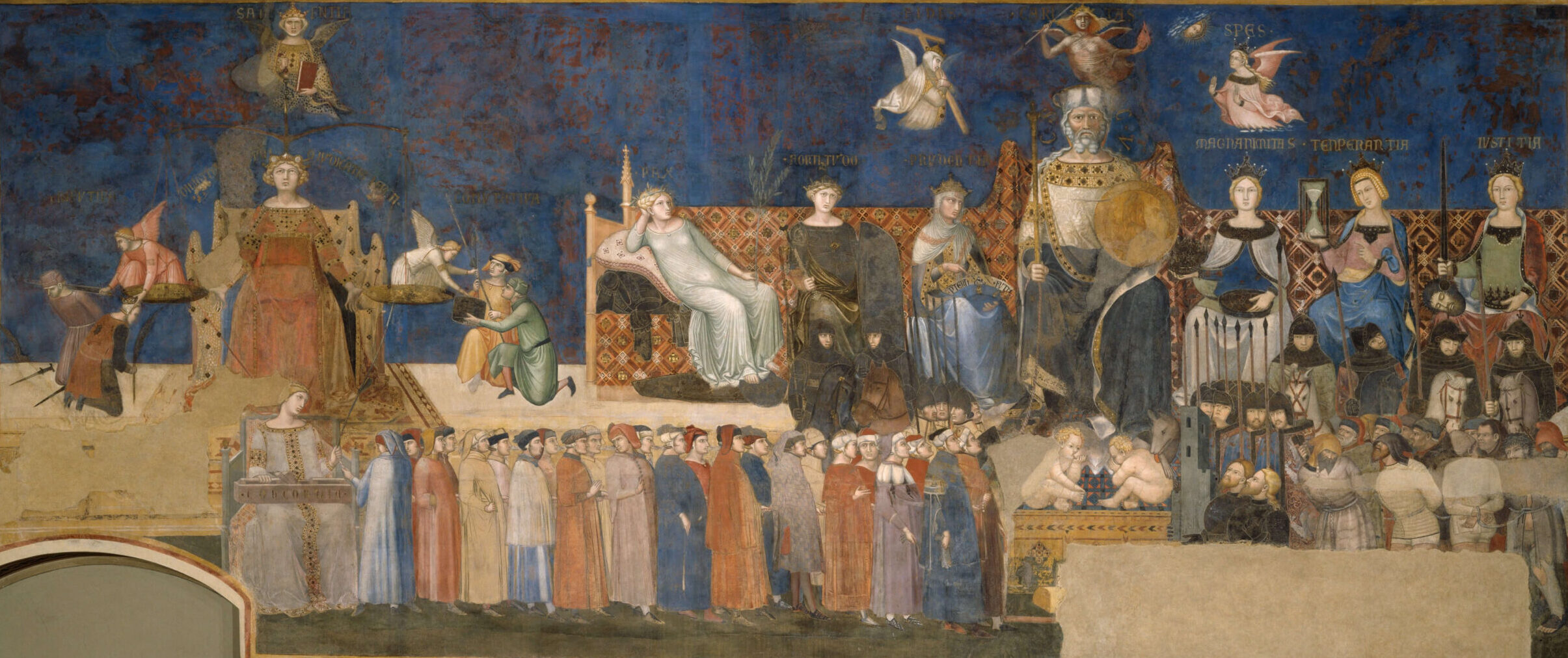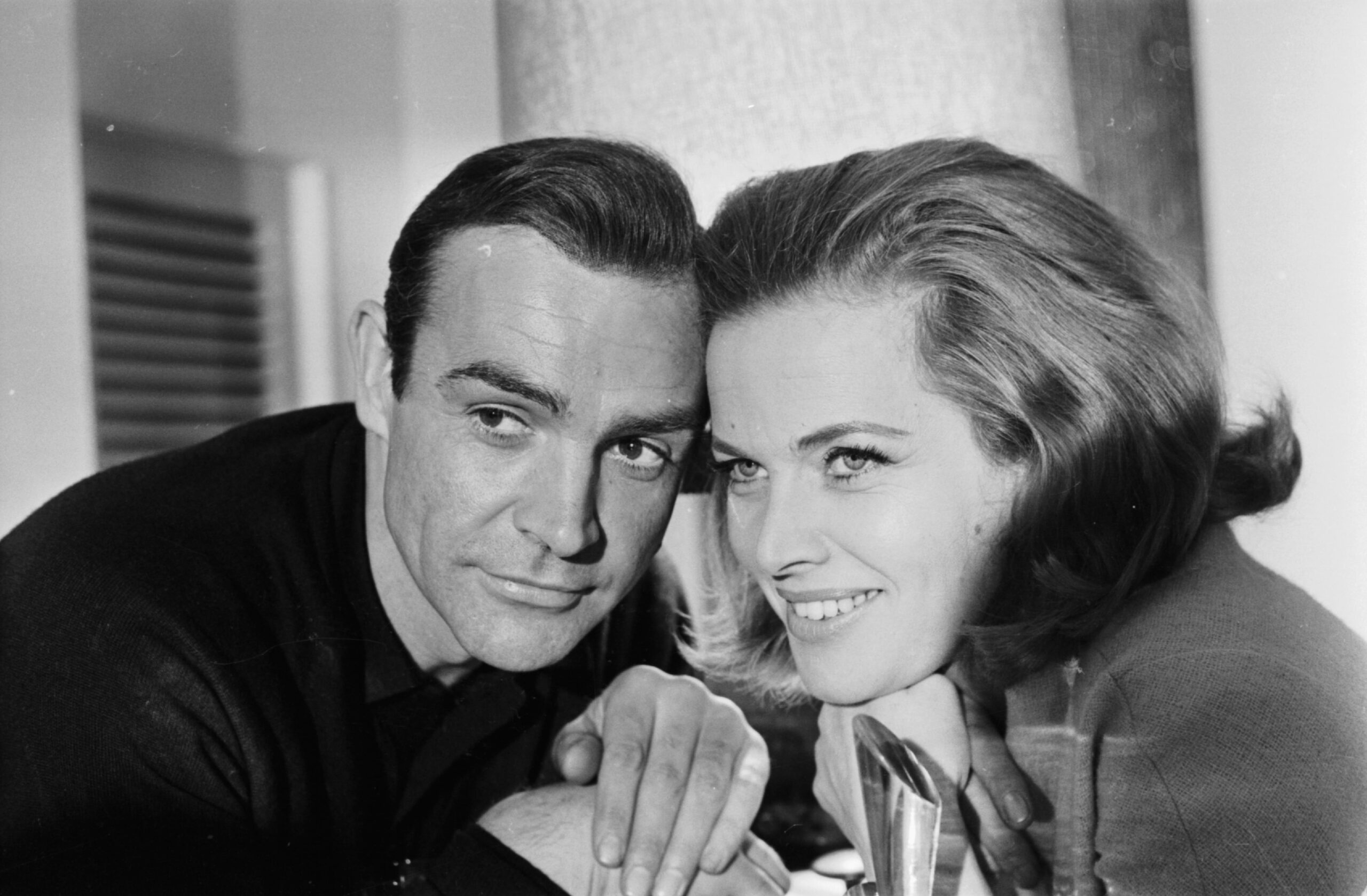“If only he knew the tricks we use! She must’ve been good, that Bene Gesserit of the Missionaria Protectiva. These Fremen are beautifully prepared to believe in us.”
–The Lady Jessica, Frank Herbert’s Dune
The immense popularity of Denis Villeneuve’s recent two-part film adaption of Frank Herbert’s novel Dune shows that while moderns may believe they are becoming post-religious, they are in fact returning to the power behind ancient myth. As the theorist Philip Rieff eloquently put it: “Piety never dies, it just moves from object to object.” Rieff saw post-religious art as a challenge to, and attempt to replace, old systems of belief. Seen this way, the best-selling science fiction novel of all time becomes the perfect “deathwork”: a work of art shaped by the modern compulsion to assail traditional faiths.
In the way he invokes both religion and myth in Dune, Herbert reveals himself to be a thoroughgoing modern. Where elements of traditional religion are present in Dune, they are always associated with the manipulation of the simple by the powerful. Elsewhere, Herbert offers—in place of religion—an artful presentation of atheism, what Rieff called “an address to the Nothing.” And yet, because of the greatness of his imagination, Herbert comes as close as any unbelieving modern can to returning to the powerful source of pagan myth, what Rieff called the “primacy of possibility.” Rieff’s theory is particularly well suited to fully comprehending “the race consciousness,” the dark modernist myth at the heart of Herbert’s masterwork, a myth far closer in its essentials to Freud than to any ancient system of belief.
The plot of Dune is quite simple. A noble family, the Atreides, are ordered by the Emperor of the Known Universe to give up their reign over the lush planet of Caladan and to transfer their rule to the desert planet of Arrakis, nicknamed Dune. Duke Leto accepts, in part because the psychoactive “spice,” which can only be extracted from the sands of the desert planet, is extraordinarily valuable. The spice is indispensable to the work of the Spacing Guild, whose guild navigators use it to activate the mental processes necessary to make the inhumanly complex calculations necessary for interstellar travel. Without the spice, interstellar travel stops, and the political order of the known universe ends. But Duke Leto has another, secret, motivation for the move to Arrakis. He has intuited the potential military power of the Fremen, the scattered indigenous people of Dune who survive in its deep deserts.
The Emperor nurses a secret hatred of the Atreides due to their popularity among the other noble houses, and so what appears to be an opportunity is actually a trap. The Atreides are barely settled on Arrakis before they are betrayed by an intimate of the ducal family and slaughtered by the Harkonnen, their hated rivals, with help from disguised imperial troops. Young Paul Atreides, Duke Leto’s heir, and Paul’s mother, Lady Jessica of the Bene Gesserit Order, escape into the desert. The Harkonnen presume Paul is dead. Instead, he has been accepted into a Fremen band and eventually becomes leader to all the Fremen. Paul commands them in an insurgency against the Harkonnen and, ultimately, against the emperor. In the process, Paul becomes a messiah figure to the Fremen.
While Dune was published in 1965, the astonishing impact of the original Star Wars trilogy (1977–1983) on the popular imagination has helped to obscure Dune’s darkness for later readers and moviegoers. It is easy to see in Paul Atreides the familiar, even comforting, story of a young man placed by fate in a position where the greatest heroism is necessary to survive and overcome evil. But the original Star Wars trilogy is a much more lighthearted and optimistic work; it is also an inferior work, philosophically and artistically. Paul Atreides is not Luke Skywalker, and the power that compels him is far darker than the “dark side of the Force” that Skywalker’s rebel alliance opposed. To reengage fully with the dark myth at the heart of Dune, it is best to turn to the work of one of the most pessimistic of our contemporary social theorists.
Philip Rieff (1922–2006) offers an effective theoretical framework for interpreting Dune as deathwork and dark myth. Rieff made his early reputation as an interpreter of Freud. At the heart of his later work was a historicist interpretation of Western civilization, which he divided into three “cultures.” The first culture was the culture of paganism; in all such polytheistic cultures the gods themselves emerged from a “metadivine,” a source of power prior to and greater than the gods themselves. This source of fathomless power above even the gods Rieff called the “primacy of possibility.” Charged with the “constant energy of menace,” the primacy of possibility can turn men monstrous or destroy them. First culture man understood the primacy of possibility through myth; his relationship to it was mediated by unfathomable, amoral, and relentless fate. To keep his distance from its menacing power, he observed taboos.
Rieff’s second culture is that of the Abrahamic faiths. There is no metadivine; nothing stands above the God of Israel. In place of the taboos walling off the primacy of possibility there are the “interdicts”: directly commanded thou-shalt-nots declared by the God who reveals Himself. Man’s relationship to this God, the final authority, is characterized not by mysterious fate but by faith. The second culture sinks the interdicts into each individual beginning in a preconscious foundational process that builds individual character.
The third culture is the culture of modernity. It rejects God and the interdicts. Rieff believed that, because there can be no culture without either tabooed prohibitions or the character-shaping interdicts, the third culture is an “anticulture.” This third culture was ushered in by an “officer class” of intellectuals and artists. Nietzsche, Weber, and of course Freud were the most important theorists of the officer class; Joyce, Duchamp, and Wallace Stevens its artists par excellence. Rieff observed that this officer class, while godless, feels itself perpetually “god-threatened.” These intellectuals are compelled to address themselves to the God of the second culture in endless artistic acts of defacement and mockery. Rieff called such works of art the “deathworks”: intellectual and artisticassaults on the old, now disestablished, second culture.
To Rieff, the closest this modernist officer class can come to the affirmative creation of culture is to create deathworks that negate the second culture of faith while also attempting an unbelieving return to the “primacy of possibility”—the source of power beyond even the gods themselves—that marked the first culture. Of course, a skeptical modern cannot approach the primacy of possibility as a first culture man did. Instead, third culture imaginations invoke the oceanic power of the primacy of possibility self-consciously, even ironically. To some moderns, this primacy of possibility returns as atheistic invocations of what Rieff called “the Nothing,” which serve as a kind of anti-creed best expressed in endless hostile parodies of the second culture. Rieff cites as an example Joyce’s mockery of the Old Testament and his sneering “Woid” (void) in place of the “Word.”
To fill the emptiness, other third culture imaginations have embraced, or even self-consciously invented, some supra-human power echoing the ancient primacy of possibility. Moderns have embraced everything from the Trotskyists’ “permanent revolution” to Wilhelm Reich’s orgone energy. Wallace Stevens, in “Notes Toward a Supreme Fiction,” demanded the angels keep silent while the poet creates a self-conscious pseudo-religious abstraction as a substitution for the Trinity: “It must be Abstract. It must Change. It must give Pleasure.”
Dune is a perfect third culture deathwork because it offers an eloquent address to the Nothing and a invokes a fictive primacy of possibility almost profound enough to approach again the slopes of myth.
Much of Dune is an address to the Nothing. In the novel, the fictionalized versions of theistic religion that most resemble second culture faiths are always false, always a screen over the Nothing that serve as both a sop to the uneducated and—more importantly—a tool for the powerful. So, while the young Paul Atreides is gifted the Orange Catholic Bible, there is no suggestion that he is expected to understand it as anything more than archaic literature. Indeed, the man who gives him the volume does so to salve his conscience for his plans to betray Duke Leto.
After this betrayal and his escape into the desert, Paul’s only hope for survival is to be accepted by the Fremen. He gains initial entree into their society in large measure due to the efforts of his mother, the Lady Jessica. Jessica belongs to the Bene Gesserit, a mysterious order of women regarded as witches by common people. Time and again, Jessica is able to insinuate Paul and herself into Fremen society by cynically invoking prophecies that her own order had sown among the Fremen generations earlier through their “Missionaria Protectiva.” These agents of the Bene Gesserit had for centuries traveled the known universe feigning spiritual leadership while disseminating myths and prophecies useful to the order that could be manipulated or “fulfilled” later by sisters in need. The Lady Jessica is astonished at how well-prepared the Fremen are to receive her manipulations of their spiritual aspirations. Her cynical string-pulling is so effective that she feels a degree of disgust at how easily she plays the seer; but Paul, the disinherited Duke, must have an army, and the Fremen are ferocious warriors.
In Dune, fictionalized versions of theistic religion are always false, always a screen over the Nothing that serve as both a sop to the uneducated and—more importantly—a tool for the powerful.
Herbert offers his most profound address to the Nothing when he presents the death of the imperial planetologist, Dr. Liet-Kynes, as a kind of atheist parable. Liet-Kynes is marooned in the desert by the Harkonnen. Exposed beneath the unrelenting desert sun and succumbing to thirst, the dying man of science experiences aural hallucinations of his dead father, the previous planetologist of Arrakis. Both father and son had pursued, in turn, a shared dream of covertly remaking Arrakis into a fecund paradise by altering its desert ecology. As his strength fails and the desert devours him, Liet-Kynes hears his father extolling their potential power over nature and the technical tasks at hand. As his father’s voice drones on about a paradise ostensibly in the making, the son struggles to find him, turning his head this way and that and thinking, “Why does he keep moving around? Doesn’t he want me to see him?” As his thirst intensifies and the voice continues, the dying son rages against his absent father: “Why aren’t you helping me? . . . Always the same, when I need you most, you fail me.” Herbert’s atheist parable concludes when the father-hallucination is silenced by the death of the son, as the stranded planetologist is consumed by the indifferent wasteland he had hoped to tame.
His invocation of the Nothing is one way Herbert shows himself to be spiritually and intellectually a modern. But it is not the only way. Modern intellectuals, Rieff believed, may loathe authority, but most cannot escape the human compulsion to go beyond the Nothing and to seek meaning in some greater power. They often find this power by returning, in half-belief, to an affirmative something that they create or embrace and that resembles, in its power and universality, the first culture primacy of possibility. Rieff believed such a return can take two forms.
Lesser imaginations seek liberation from authority through what Rieff called “ficta”—some more or less self-consciously imaginative return to the primacy of possibility. This is one of Rieff’s most profound observations; once one knows to look, one sees everywhere in our culture such knowing modern reimaginings of the primacy of possibility. At its most deadly, it is the Class Struggle, the Revolution, the Volk, the Right Side of History—grand causes or processes invoked to justify moral lowerings toward violence and destruction. At the level of the lonely transcendence-seeking individual, it can be Oprah’s “law of attraction” or orgasm-as-telos in its 1001 modern forms. At its dopiest, the primacy of possibility is invoked as “the Force” in Star Wars, “the Metaverse” in the Marvel cinematic universe, or “Our Democracy” on MSNBC. All transcendences of a moment —to be picked up or dropped as each modern person pleases and is pleased.
A truly great third culture imagination, however, can almost manage a genuine return to myth. Rieff believed Freud had such an imagination. Although Rieff taught that “where there is nothing sacred . . . there can be no myth,” he wrote of Freud:
In Freud, there is something sacred, that is libido, sexual drive or eros. This is an exact parallel to the primacy of possibility, for out of eros and the other primordial, Thanatos, everything derives. Eros or libido is no neutral force. This passion, or lust, call it libido, is instinct with more than life. It is equally instinct with death. And ultimately, it is death that is triumphant . . . the image of the primacy of possibility, the primordial in Freud, that is, in Freudian myth, develops as a tendency to [as Freud writes] “form living substances into ever greater unities, so that life may be prolonged and brought to higher development.”
Herbert also had such a great, third culture imagination; his vision was very similar to Freud’s. Herbert’s myth, the true dark heart of Dune, is what he called “the race consciousness,” by which he meant not one race of men, but what we might today prefer to call species consciousness. This myth unfolds through the experiences of Paul Atreides.
Paul has been trained from birth by his parents to wield power. Even though Paul is a male, his mother broke tradition and taught him the Bene Gesserit techniques in subtle psychological and religious manipulation. His parents added to this “mentat” training—conditioning Paul to think as a living computer. When Paul arrives on Arrakis, the psychoactive spice which is harvested in the desert blends and stimulates his training, exponentially enhancing a budding ability to see into the future.
Paul’s foresight is not a gift of prophecy; there is no higher power who could grant such a gift. In Dune, prophecy in the religious sense is merely a sham the powerful and educated use to manipulate the lower orders. Instead, Paul’s prescience is the result of a near-compulsion to undertake ceaseless calculations of all possible future paths. It is a rational power, albeit one already beyond the ability of the untrained even before the psychoactive property of the spice gave it superhuman intensity.
As this prescience opens itself fully to Paul, he realizes that in all possible futures he is being steered relentlessly toward “the jihad,” an uprising of Fremen warriors undertaken in his name that would sweep across the universe and kill billions. At first Paul resists this, but as the Fremen make him first their hero and then their messiah, he realizes the jihad cannot be stopped. The jihad is Paul’s “terrible purpose.” It is the irresistible working out of the “race consciousness,” Frank Herbert’s secular myth.
Herbert’s “race consciousness” myth holds that profound historical events are brought about because the human organism is hardwired to race-renewing conflict. In Dune, the members of the Bene Gesserit order to which Paul’s mother belongs, far from being witches, are in fact fanatic gatherers of genes. Over scores of generations the Bene Gesserit had been attempting to breed one such as Paul for the sanguineous biological renewal of the human race. For Herbert and Freud, religion and myth are subservient to and shaped by the biological needs of man as a species.
Herbert’s scientistic myth is a bloodier version of Freud’s. Freud imagined a biological telos emerging from libido and Thanatos, in which the species could “form living substances into ever greater unities, so that life may be prolonged and brought to higher development.” In Herbert’s version of this biologic mythos, both libido and Thanatos are present in the “race consciousness” as it proceeds inexorably toward the race-renewing jihad:
The race of humans had felt its own dormancy, sensed itself grown stale and knew now only the need to experience turmoil in which the genes would mingle and the strong new mixtures survive. All humans were alive as an unconscious single organism in this moment, experiencing a kind of sexual heat that could override any barrier. And Paul saw how futile were any efforts of his to change any smallest bit of this.
Herbert had an imagination worthy of the greatest of the third culture “officer class.” Like Joyce, that imagination is God-threatened, thus the consistent artful disparagement of traditional religion. Where Frank Herbert addresses any divinity comparable to the God of the second culture, he offers only the Nothing, concealed, for those too simple to accept it, under cynical human manipulations. Dune draws upon the forms of the Abrahamic faiths while rejecting the substance of these faiths entirely.
Like the best modern imaginations, however, Herbert still seems compelled to discover some greater power. He draws upon mythic themes that emerge from the primacy of possibility—prescience and supra-human power—in the service of a biologic myth so close to Freud’s as to sound almost like a conscious elaboration upon it. Where Herbert returns to supernatural-seeming themes drawn from the pagan primacy of possibility, he does so in a manner that is amoral and scientistic, finding a meaning-imparting myth in murderous destruction and genetic renewal. Read through the lens of Rieff’s theory, then, Dune can be best understood as one of the great modern deathworks.















